FAQ
- Bolivia climbing questions
-
Mallorca island and rockclimbing
- What are main specifics of rockclimbing trip to Mallorca
- Mallorca island impressions
- Rockclimbing safety Spain
- Mallorca climbing accommodation
- What season is possible for rockclimbing in Mallorca
- Transport accessibility of climbing sectors in Mallorca
- Active vacation in Mallorca
- Saint Anthony night in Mallorca
- Peru climbing questions
- Gear reviews
-
Safety in the mountains
- How NOT to climb the summit?
- Mountain navigation
- At the limit of possibilities
- Mountain thunderstorm
- Solo ascents and mountain trips alone
- Mutual responsibility in mountaineering
- Safety illusions in the mountains - a rope
- Independent team of two
- Mountain troubles
- Psychological problems in the mountains
- Health in the mountains
-
Elbrus questions
- Elbrus climbing gear
- Climbing Elbrus with children?
- Mount Elbrus location?
- Elbrus logistics
- How to get to Mount Elbrus?
- Elbrus German airfield?
- Elbrus difficulty grade
- 5 points beginner must know about Elbrus
- How to prepare for Elbrus?
- Are there avalanches on Mount Elbrus?
- Climbing Elbrus solo?
- Seasonality of climbing Mount Elbrus
- How much time climbing Elbrus takes?
- Clothes for Mount Elbrus?
- Pressure at the top of Elbrus?
- Elbrus air temperature
- Elbrus sightseeing
- How much to climb Elbrus
- Gear questions
- Mountaineering questions
- Mountain climbing training
- Rockclimbing questions
- Horse riding tours
- Iceclimbing questions
-
Questions on the alpine programs
- What to climb in Morocco?
- Weekend summit climb
- Georgia 2023
- Pico Aneto - what is that mountain?
- Mountain programs format
- Mountain climbing food ration
- Queries on the alpine program climbing Mount Bazarduzu
- Queries on the Kamchatka alpine program climbing
- What is combined program?
- What is Sightseeing program?
- What is pilot program?
- What programs you have of the medium complexity level?
- Basic expedition rations
- Prices for the mountain climbing programs
- Queries on the Mountain Course in Adyl Su valley
- Program complexity?
- Questions about MCS AlexClimb
- Questions related to trekking programs
Mountain programs format
English version of the text for mobile device
Versión del texto en español para dispositivos móviles
"It's not the goal that determines the value of the path. It's who you become on the way to that goal".
All the guided programs of my Mountain Club IClimb (i.e. MCS AlexClimb Mountaineering School), both mountaineering and trekking, are divided into two main categories depending on their service organization: supported and unsupported.
What are the main differences? (The following explanation does not apply to training rock climbing or ice climbing programs.)
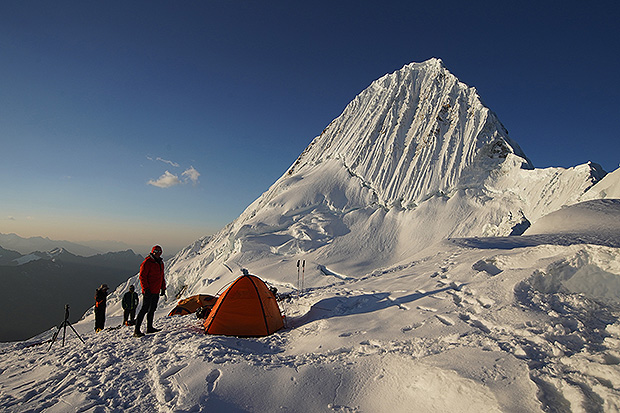
IClimb Club Mountaineering Supported Program - Climbing the Most Beautiful Peak in the World - Alpamayo, Peru
The supported format for trekking and climbing is the safest and most comfortable option.
Ascents and hikes in this category are held typically in areas with all the necessary infrastructure for a comfortable outdoor experience.
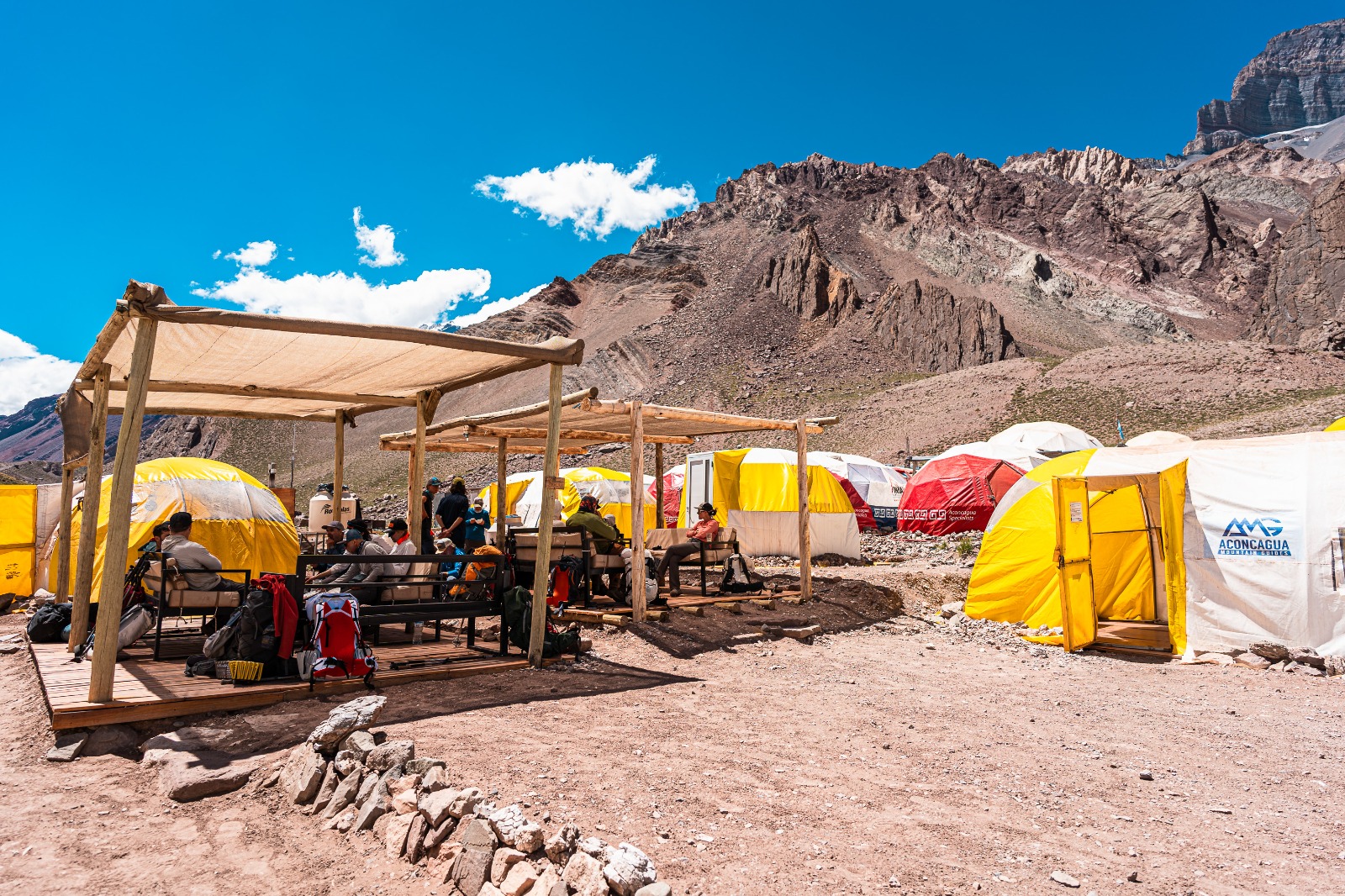
Supported format of mountain journey - IClimb's Aconcagua Summit Climb, Argentina
Overnight stays are arranged in huts or stationary tents, and expeditionary loads are transported along the route using pack animals or porters.
Meals on supported mountain programs are prepared by a professional chef who accompanies the group throughout the entire route.
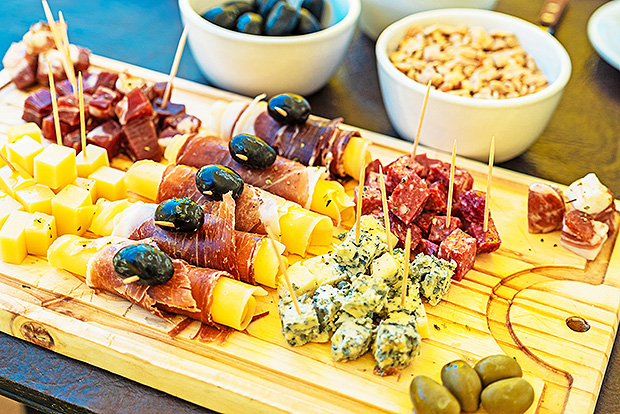
Lunch during the Aconcagua supported route, Argentina
The team members in supported programs are not required to participate in expedition tasks such as cooking, organizing overnight stays, or carrying loads (except for a small backpack with water, camera and snacks).
Food plan and expedition menus can be agreed upon with the organizer before starting the route.
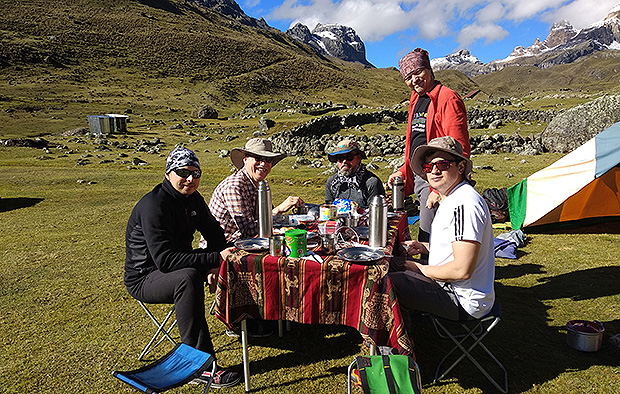
Breakfast during a supported trek in Cordillera Huayhuash, Peru
Supported mountain programs are only possible in areas with the appropriate infrastructure and accompanying services to support all program elements.
We conduct most of the programs of that kind in South America – in Peru, Bolivia – and in Africa – Morocco, Kenya, and Tanzania.
Camping during the supported program – Trekking in Cordillera Huayhuash, Peru
Supported mountain programs in regions traditionally underserved by such services (the European Alps, the Caucasus, Altai, and Kamchatka) are in most cases either impossible or extremely difficult and expensive for organizing the programs of the supported format.
This is because all the personnel necessary to realize the program must be brought in from other, sometimes quite remote, areas. For this reason, the geography of supported mountain programs is tied to specific regions.
Guided and supported Mountain Programs in Peru
Advantages of supported mountain trekking and climbing programs:
- Accessibility for participants, regardless of their fitness level and experience in climbing and trekking
- No complicating factors, opportunity to focus on your own emotions and the beauty of the mountain landscape
- No household duties, more free time
IClimb Mountain Programs in the Caucasus Mountains
Disadvantages of supported mountain programs:
- Higher cost
- Attaching to popular areas with high tourist traffic
- Limited choice of standard routes
Examples of supported mountain programs from the IClimb collection:
Climbing Mount Kilimanjaro
Climbing Mount Aconcagua
Climbing Mount Alpamayo
Cordillera Huayhuash Trekking, etc.
'''''''''''''''''''''''''''''''''''''''''''''''''''''''''''''''''''''''''''''''''''''''''''''''''''''''''''''''''''''''''''''''''''''''''''''''''''''''''
Unsupported mountain programs offer a more authentic, challenging format for the team members, where all the expedition duties are divided equally between the participants.
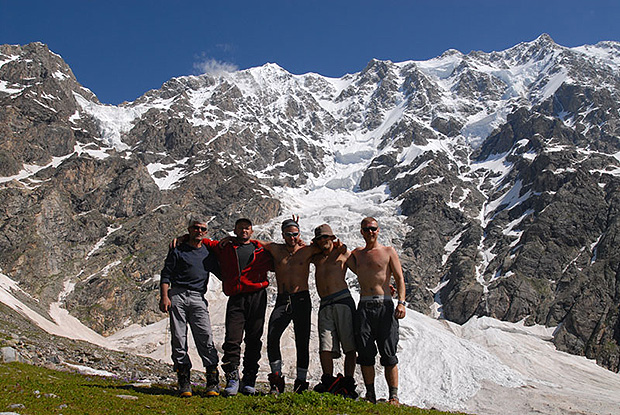
After completing an unsupported mountain program in the Caucasus, Mount Shkhara climb
This is a more mobile and affordable format for mountain travel, in its classic form, so to speak.
Many popular mountain areas, historically associated with the development of mountain recreation, lack the infrastructure to host supported programs.
The French Alps are traditionally a popular region for unsupported mountaineering programs and hikes
For example, in Switzerland, France, or Northern Italy, on the mountain routes almost no one uses porters or expedition cooks.
Traditionally, all ascents and treks in highly developed Alpine regions are conducted in a classic unsupported format, maintaining authenticity and "purity of style."
Unsupported program in the Alps - ascent of Monte Rosa
Due to the lack of staff and the associated logistical difficulties, unsupported programs are much more flexible.
They can be of greater technical or physical difficulty, involving overcoming long distances and challenging technical mountaineering obstacles.
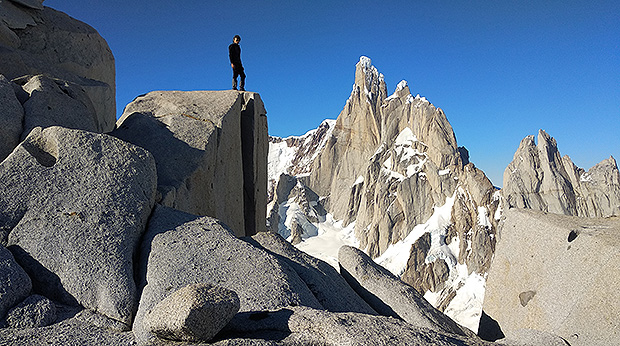
IClimb Unsupported Mountaineering Program in Patagonia - climbing Mount Fitz Roy
Naturally, unsupported mountain programs are more demanding in terms of the participants' special experience and adequate physical fitness corresponding to the level of the route.
Together with my friends from many countries we organize unsupported mountain programs in the most remote corners of the earth.
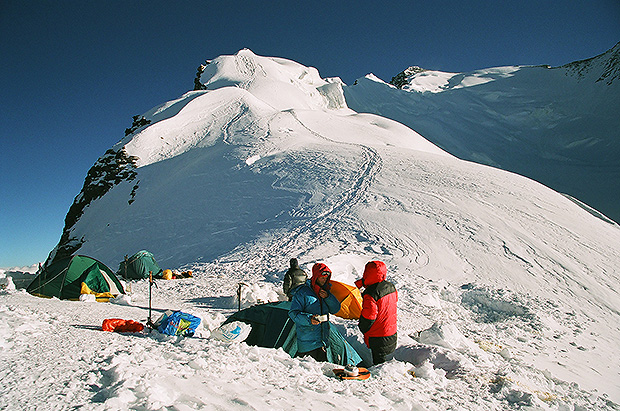
Unsupported climbing program - ascent of Peak Korzhenevskaya in the Pamirs
This unpretentious format does not require any additional conditions for ascents or trekking. Of course, this is subject to the physical safety of the participants and the availability of professional rescue services in the region.
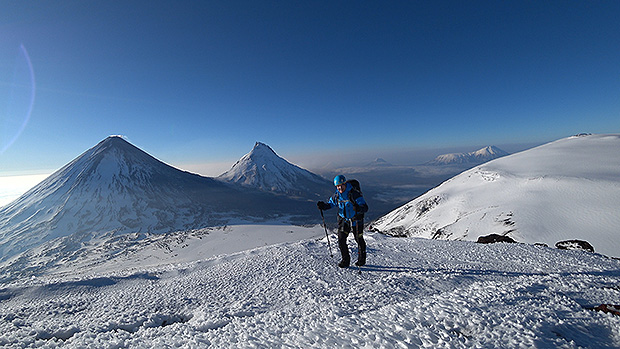
Unsupported Climbing Expedition to Kamchatka Volcanoes
Advantages of unsupported mountain climbing and trekking programs:
- Lower organization costs compared to the supported format
- No geographic restrictions or ties to crowded tourist regions
- Wide range of route difficulty categories
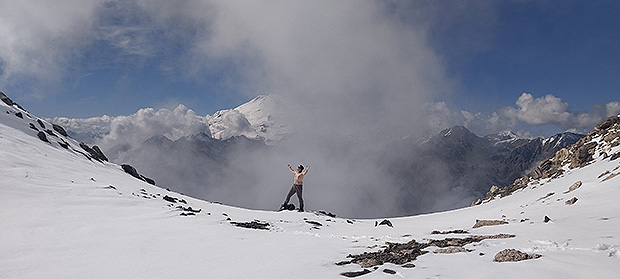
Unsupported mountain program in the Caucasus - Adyl-Su Mountaineering School, Elbrus Region
Examples of unsupported mountain programs from our collection:
Climbing Mount Elbrus
Climbing Mount Kazbek
Climbing Mount Ushba
Climbing volcano Kluchevskaya Sopka, etc.
Which format of mountain activities is better - to this question it is difficult, if not impossible to answer, as it depends entirely on the preferences of the program participants.
Both the supported and unsupported mountain programs have their obvious advantages and disadvantages, which should be considered when choosing your travel itinerary, budget, timeframe, and geography.
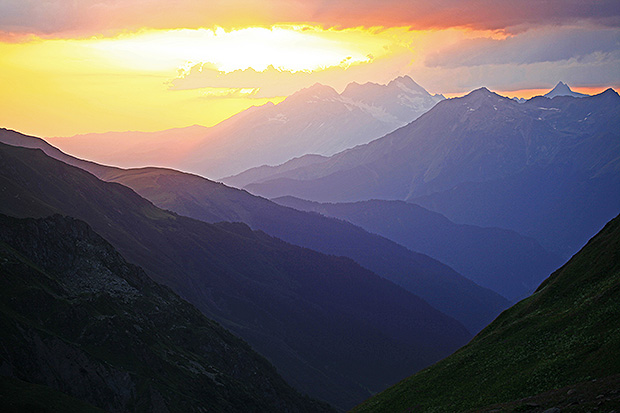
Regardless of how your mountain trip is organized, it is sure to be a fantastically beautiful and interesting adventure.
Text and photographs by Alex Trubachev
International mountain guide, rock and ice climbing coach
MCS EDIT 2025
Our Principles
AlexClimb Rule #1 - Safety First
From the very beginning of our activity, here nearly 16 years, the first Principle of work of School of mountaineering and rock-climbing of MCS AlexClimb is the Safety Priority. On the basis of this Principle all process of training is based, all programs and rounds are developed and carried out only within this main principle. We consider that at professional approach to development of programs, at personal discipline and correctly put motivation - occupations by mountaineering and rock-climbing are COMPLETELY safe. And from the return - all troubles and accidents in our sport come from nonprofessionalism, from ignorance or neglect by elementary standards of safety, from irrational motivation, from revaluation of own forces and opportunities. All these prerequisites we COMPLETELY EXCLUDE in our work - ours Rock-climbing, Ice climbing and Mountaineering are based on one Principle - the Safety Priority. In rock-climbing, mountaineering and ice climbing, the Priority of Safety of MCS AlexClimb-is your personal security and comfort irrespective of, than we are engaged - we train muscles and we work technology of the movement in the sports hall and on the rock climbing wall, we make the way through snowstorm to top or we relax on golden sand of the Caribbean beach after hot day of trainings on rocks. The Safety priority - the main credo of School of mountaineering and rock-climbing of MCS AlexClimb.
AlexClimb Rule #2 - Leave No Trace
Closely interacting with Nature, working with the active programs in mountains, woods, lakes and rivers, we perfectly understand the importance of carefull and respectfull bahavior towards the Nature, for its resources. From the very beginning of our outdoor-activity we adopted rules of Leave No Trace technique - the standard of behavior of the person accepted in all the civilized world in relation to environment and especially - to the wild nature. After all on the relation of people to the nature near which they exist, itself can draw dalekoidushchy conclusions on the relation of these people to... Where and as we didn't travel - we don't reserve any garbage, we try to reduce whenever possible our influence on environment to a minimum. We clear earlier zagryazyonny tourist parking of the left garbage, we take out and we take out to utilization places that to us other people left there. We consider that only thus, at personal individual consciousness of each citizen, each tourist, climber or autotraveller, we will be able to keep the nature surrounding us in its state, natural, suitable for life, - in it pledge of the healthy future for ourselves and our children.





